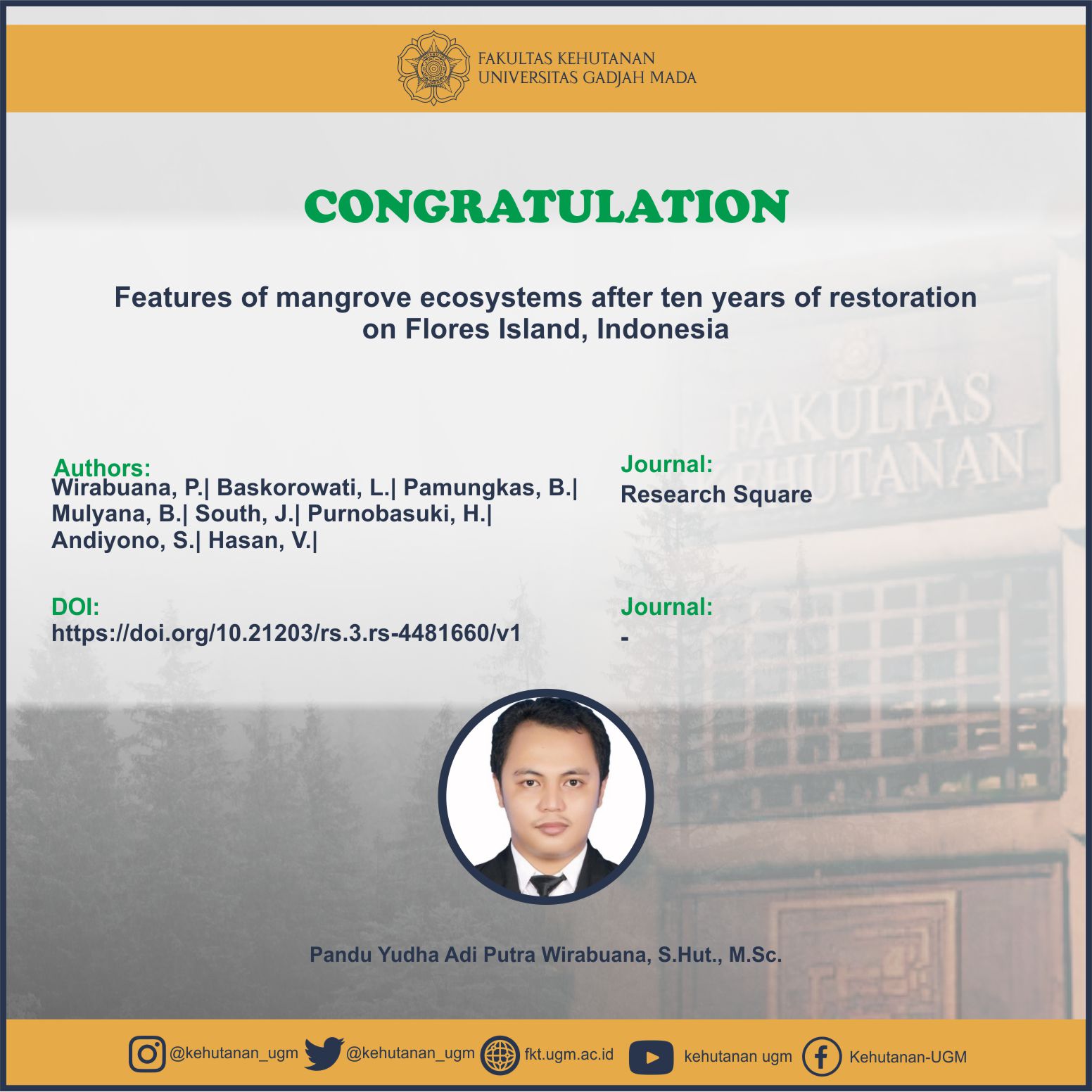
Abstract
Indonesia has extensively reforested mangroves to stabilize coastal ecosystems and mitigate climate change. Reforestation’s long-term effects on recovering mangroves are not extensively established because most projects are only observed for two years. It raises the question of whether mangrove replanting aids biodiversity conservation and ecological recovery. This project will characterize Flores Island mangrove ecosystems after ten years of regeneration. The ecological survey took place at Bangkoor, Kolisia, and Talibura reforestation areas. Floristic composition, wildlife diversity, carbon sequestration, and energy storage were measured at each location. Field observations revealed 10 plant and 11 animal species, with flora and fauna species varying by site. Flora diversity was highest in Kolisia and fauna diversity was highest in Talibura. Talibura and Kolisia have similar vegetation and wildlife than Bangkoor. Restored mangrove stands sequestered 28.69 − 70.02 Mg CO2 ha− 1 and stored 30.54×104 − 54.07×104 MJ ha− 1 of energy. Rhizophora apiculata (47.37 ± 5.68 kg CO2) had the most carbon sequestration, while Bruguiera gymnorhiza (645.22 ± 21.65 MJ) had the highest energy storage. Reforestation-induced mangrove ecosystems have biodiversity, carbon storage, and energy stock features.
SDGs:
1. SDGs 11:Sustainable Cities and Communities
2. SDGs 13:Climate Action
3. SDGs 14:Life Below Water
4. SDGs 15:Life on Land
Link Dokumen:
Download
